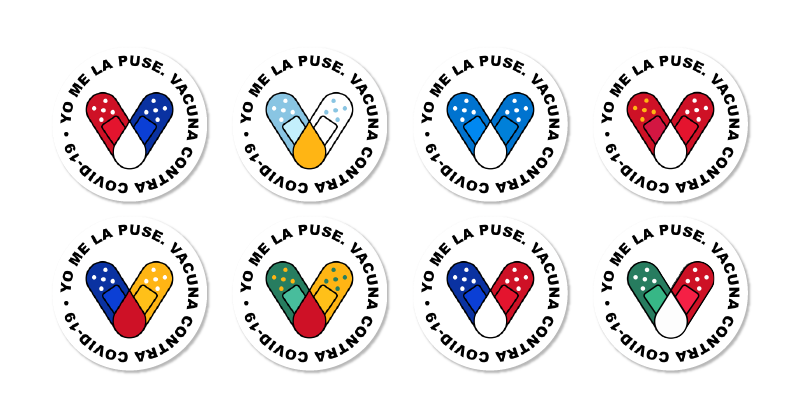

Los trabajadores agrícolas corren un riesgo importante de sufrir estrés por calor. El estrés por calor se produce cuando el cuerpo no puede deshacerse del exceso de calor y su temperatura central aumenta. El estrés por calor puede dar lugar a enfermedades más graves relacionadas con el calor, como el agotamiento por calor, los calambres por calor, el golpe de calor e incluso la muerte, si no se trata. El trabajo agrícola, que requiere la realización de un trabajo físicamente exigente durante largas horas en un clima caluroso y a veces húmedo, pone a los trabajadores en alto riesgo.
Esta guía proporciona información a los proveedores de servicios de salud sobre la prevención y el tratamiento de las enfermedades relacionadas con el calor. Dado que los trabajadores pueden no estar familiarizados con todos los síntomas del estrés por calor, es importante que los proveedores de servicios de salud hablen con los trabajadores agrícolas y otras personas en riesgo sobre los síntomas de las enfermedades relacionadas con el calor y su prevención.
This joint FJ and MCN publication was supported by the Health Resources and Services Administration (HRSA) of the U.S. Department of Health and Human Services (HHS) as part of awards totaling $1,949,598 with 0% financed with non-governmental sources. The contents are those of the authors and do not necessarily represent the official views of, nor an endorsement by, HRSA, HHS, or the U.S. Government. For more information, please visit HHS.gov.
Agricultural workers are at significant risk for heat stress. Heat stress results when the body cannot get rid of excess heat and its core temperature rises. Heat stress may lead to more severe heat illness including heat exhaustion, heat cramps, heat stroke, and even death if left untreated. Agricultural work, which requires performing physically demanding work for long hours in hot and sometimes humid weather, places workers at high risk.
This guide provides information to clinicians on the prevention and treatment of heat-related illness. Since workers may not be familiar with all of the symptoms of heat stress, it is important that clinicians discuss heat illness symptoms and prevention with agricultural workers and others who are at risk.
This joint FJ and MCN publication was supported by the Health Resources and Services Administration (HRSA) of the U.S. Department of Health and Human Services (HHS) as part of awards totaling $1,949,598 with 0% financed with non-governmental sources. The contents are those of the authors and do not necessarily represent the official views of, nor an endorsement by, HRSA, HHS, or the U.S. Government. For more information, please visit HHS.gov.
Agricultural workers are at significant risk for heat stress. Heat stress results when the body cannot get rid of excess heat and its core temperature rises. Heat stress may lead to more severe heat illness including heat exhaustion, heat cramps, heat stroke, and even death if left untreated. Agricultural work, which requires performing physically demanding work for long hours in hot and sometimes humid weather, places workers at high risk.
This guide provides information to clinicians on the prevention and treatment of heat-related illness. Since workers may not be familiar with all of the symptoms of heat stress, it is important that clinicians discuss heat illness symptoms and prevention with agricultural workers and others who are at risk.
This joint FJ and MCN publication was supported by the Health Resources and Services Administration (HRSA) of the U.S. Department of Health and Human Services (HHS) as part of awards totaling $1,949,598 with 0% financed with non-governmental sources. The contents are those of the authors and do not necessarily represent the official views of, nor an endorsement by, HRSA, HHS, or the U.S. Government. For more information, please visit HHS.gov.
These image-centric and engaging resources can help clinicians reach refugee, immigrant, and migrant communities with important information regarding getting vaccinated. The flyers are available in English, Spanish, and Haitian Creole, and both pre-made and editable versions are available. Users can insert their organization logo as well as state-specific information such as their state vaccine sign-up website and vaccine customer service phone number. Along with these fliers, MCN has created a simple ‘how-to’ video (see above) for editing the fliers.
The original designs for this resource were created by a staff member of East Coast Migrant Head Start Project who is the daughter of a farmworker, and who had once gone to East Coast Migrant Head Start Project centers herself. The flyers were adapted by MCN.
Show your support of the vaccine in your community! MCN’s #YoMeLaPuse campaign offers five beautifully designed posters showing people of various ages after their vaccination that are available for download and printing. A sixth poster is customizable, allowing communities to paste in a photo of a local religious leader, or community health care providers, or other community leader who is proud to have gotten the vaccine. The posters are accompanied by a short video in Spanish, which can be played at community events and in waiting rooms.

This colorful vaccine calendar comic gives low-literacy information on vaccines and some information on why adults need immunizations, too. Available in high resolution to download and print into poster size.
The New England Journal of Medicine has an article analyzing early cases in China which gives some clarity around how the virus works: “Clinical Characteristics of Coronavirus Disease 2019 in China".
The CDC’s archived webinar from last week provides a useful overview for clinicians: “Coronavirus Disease 2019 (COVID-19) Update—What Clinicians Need to Know to Prepare for COVID-19 in the United States.”
This almost real-time map shows where COVID-19 cases have been reported, all over the world, which provides some perspective and allows for a visual understanding of the spread as it progresses.
NACHC’s new FAQ runs down a number of additional resources not covered here, specifically tailored for health centers.
HRSA’s new COVID-19 FAQs give some overview on the health center requirements around emergency preparedness as well as recommendations for communications from health centers.
This new poll, taken by Migrant Clinicians Network in January and February 2018, reflected the experiences of clinical staff from 26 states across the country. Respondents came from every corner of the clinic; occupations listed include Physician, Executive Director, Dental Assistant, Outreach Specialist, Therapist, Community Health Worker, Registered Nurse, and 24 other occupations. The poll follows up on MCN’s 2017 poll, in which 63 percent of respondents indicated that immigrant and mobile patients’ attitudes and feelings toward health care access had changed.

FECHA: 11 de Octubre de 2017 @ 1 PM (ET)
PRESENTADORES:
Para recibir credito de Trabajador/a de Salud Comunitaria o Educacion de Continua de Enfermera después de ver alguno de estos seminarios usted debe hacer lo siguiente:
Conforme las familias regresan a sus hogares en Houston, una vez que las inundaciones causadas por los Huracanes Irma y María se van retirando, esto se convierte en una carrera contra el tiempo. Un olor sofocante llena los cuartos de las casas, los charcos permanecen en los pasillos, y el moho se multiplica rápidamente. En cuestión de días, los patios ensopados de los vecinos se convierten en tiraderos de basura, conforme los trabajadores empiezan a quitar de las casas las paredes con moho, los pisos y los cielos destruidos, así como los muebles dañados. En este proceso, los trabajadores y muchos residentes se exponen al agua contaminada con químicos y basura, materiales de construcción peligros y alimañas dañinas. Pero hay otros riesgos adicionales, estructuras inestables y posibles intoxicaciones por monóxido de carbono de los generadores que trabajan incansablemente en espacios con poca ventilación. La exposición a asbestos, sílice y plomo son también peligros comunes para estos trabajadores.
Katrina, Sandy, Harvey, Irma y ahora Maria: son nombres de tormentas que nos indican las diferentes comunidades que terminaron bajo el agua, pero muchas de las historias emanadas de ellas, sobre la limpieza -- y los peligros involucrados-- son las mismas. Con resiliencia y determinación, las comunidades se tratan de reconstruir, pero la reconstrucción necesita una fuerza de trabajo inmediata, lista para este trabajo peligroso y extenuante.
Las operaciones de recuperación después del desastre, limpieza y reconstrucción presentan muchos riesgos y peligros para los trabajadores. Muchos de ellos realizan este trabajo sin el equipo de seguridad o el entrenamiento de mitigación de peligros adecuado.
En la recuperación de una supertormenta, ¿cuáles son las vulnerabilidades que los trabajadores enfrentan y qué significa eso para la seguridad y la salud del trabajador? Las siguientes preguntas surgen para los proveedores y trabajadores de salud comunitarios que cuidan y se preocupan por estos trabajadores: ¿cuáles son los puntos claves que necesitamos entender para poder cuidar de aquellos involucrados en estos esfuerzos de limpieza y reconstrucción? y ¿qué podemos hacer para que ellos mismos prevengan las lesiones y las enfermedades?
Este seminario en línea recupera experiencias obtenidas de desastres naturales anteriores y ofrece recursos que le pueden guiar en su trabajo. Ofreceremos casos reales para ilustrar los peligros y revisaremos formas en que los trabajadores se pueden proteger a sí mismos, incluyendo el entendimiento de sus derechos y responsabilidades.
Este proyecto cuenta con el apoyo de la Administración de Recursos y Servicios de Salud (HRSA) del Departamento de Salud y Servicios Humanos de los Estados Unidos bajo el acuerdo de cooperación número U30CS09742, Asistencia Técnica a Centros de Salud Comunitarios y Migrantes y Personas sin Hogar por $ 1,094,709.00 con 0% del total Proyecto NCA financiado con fuentes no federales. Esta información o contenido y las conclusiones son las del autor y no deben ser interpretadas como la posición o política oficial de, ni cualquier endosos deben ser inferidos por HRSA, HHS o el Gobierno de los Estados Unidos.
Offers basic screening questions, common occupations and ailments associated with them, as well as recommended treatment. Also includes sample letters from clinicians to employers for restricted work.
California's Medical Supervision Program is a biomonitoring program that measures cholinesterase activity in bloog samples from agricultural workers. Employers are required by law to contract with physicians who have registered for this program, all of whom are included in this list.
"Coccidioidomycosis or Valley Fever is an infectious disease in parts of the U.S.A. It is caused by inhaling microscopic arthroconidia (also known as arthrospores or spores) of the closely related fungal species Coccidioides immitis and C. posadasii. Areas where Coccidioides is endemic (native and common) include states in the southwestern U.S.A. such as Arizona, California, New Mexico, Nevada, Texas, and Utah and parts of Mexico, Central America and South America."
Safety and Health Practicesfor Nail Salon Workers and a Training Guide for Nail Salon Worker Safety and Health Outreach Program
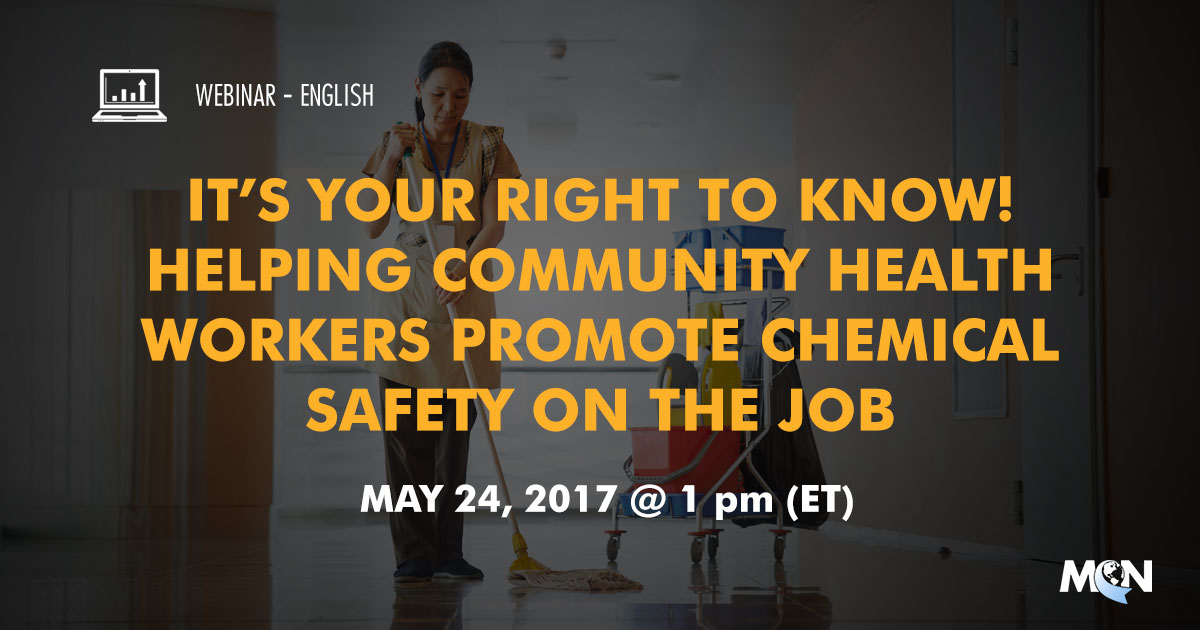
DATE: May 24, 2017, 1 pm (ET)
SPEAKERS: Juliana Simmons, MSPH, CHES
To receive CME* or CNE credit after viewing this webinar, you must:
José Navarro was excited for his new career after landing a job in the poultry industry. After five years on the job, 37 year-old Navarro began coughing up blood. He died soon after when his lungs and kidneys failed. His death triggered a federal investigation raising questions about the health risks associated with the use of toxic chemicals in poultry plants.
Millions of workers are exposed to chemicals everyday on the job. All workers have the right to know about the chemicals they work with and community health workers can be an important source of information and support for workers. This workshop will teach community health workers how to explain what happens when someone is exposed to chemicals and how workers can best protect themselves
This project is supported by the Health Resources and Services Administration (HRSA) of the U.S. Department of Health and Human Services (HHS) under cooperative agreement number U30CS09742, Technical Assistance to Community and Migrant Health Centers and Homeless for $1,094,709.00 with 0% of the total NCA project financed with non-federal sources. This information or content and conclusions are those of the author and should not be construed as the official position or policy of, nor should any endorsements be inferred by HRSA, HHS or the U.S. Government.
DATE: May 10, 2017, 1 pm (ET)
SPEAKERS: Patria Alguila and Ileana Ponce-Gonzalez, MD, MPH, CNC
To receive CME* or CNE credit after viewing this webinar, you must:
In this webinar participants will be able to identify the Health Resource Services Administration performance measures related to depression, describe symptoms of depression, understand how to encourage patients to control and manage their diabetes and depression, and understand the principle barriers faced by patients in the control and management of their diabetes and depression
This project is supported by the Health Resources and Services Administration (HRSA) of the U.S. Department of Health and Human Services (HHS) under cooperative agreement number U30CS09742, Technical Assistance to Community and Migrant Health Centers and Homeless for $1,094,709.00 with 0% of the total NCA project financed with non-federal sources. This information or content and conclusions are those of the author and should not be construed as the official position or policy of, nor should any endorsements be inferred by HRSA, HHS or the U.S. Government.
"Emerging Infectious Diseases is an open access journal published monthly by the Centers for Disease Control and Prevention (CDC)." ... "Emerging Infectious Diseases follows the International Committee of Medical Journal Editors recommendations for the conduct, reporting, editing, and publishing of scholarly work in medical journals. The journal’s peer review process allows for critical assessment of submitted manuscripts by experts who are usually not part of its editorial staff. As an independent publication, the journal’s peer-review process operates independently from CDC’s clearance processes."
Available in English and Spanish!
Created by MCN, medical student Rachel Kelley of UCSF, and collaborators at East Tennessee State University, this guide is intended to be a reference for health care providers who work with people employed in the U.S. tomato industry. It aims to prepare providers with a more detailed understanding of hazards, health issues, and work processes associated with different tomato industry jobs.
This guide draws on published research, experienced health professionals’ advice, and information gathered from interviews and focus groups conducted with 36 tomato workers from diverse backgrounds and 14 community leaders familiar with tomato workers’ health in multiple states. It is important to note that health and safety conditions at any particular farm or company may vary from what is described here. Furthermore, individual workers may experience the same set of conditions differently.
The first section of the guide focuses on health hazards and health conditions commonly encountered in tomato production. The second section consists of detailed descriptions and illustrations of different tomato production tasks. The third section covers “human resources” information and policies that apply to U.S. agricultural workers generally. The appendices contain a Spanish-English glossary, further detail about different types of pesticides, information about agricultural occupational health policies and regulation, and a list of resources and readings.
Includes EPA manual "How to Comply With the 2015 Revised Worker Protection Standard For Agricultural Pesticides - What Owners and Employers Need To Know" and an excerpt specifically for clininicians regarding medical evaluation and respirator fit test. See also the medical evaluation questions in English and Spanish.
Free and confidential consultation for clinicians from the Clinician Consultation Center at San Francisco General Hospital focusing on substance use in primary care
Objectives of the Substance Use Warmline:
Consultation topics include:
The CCC’s multi-disciplinary team of expert physicians, clinical pharmacists and nurses provides consultation to help clinicians manage complex patient needs, medication safety, and a rapidly evolving regulatory environment.
Learn more at http://nccc.ucsf.edu/clinician-consultation/substance-use-management
This 90-minute webinar was created for physicians, nurses, and other health professionals who treat and case manage patients with active TB. The webinar introduced the 2016 Official American Thoracic Society/Centers for Disease Control and Prevention/Infectious Diseases Society of America Clinical Practice Guidelines: Treatment of Drug-Susceptible Tuberculosis. This training highlighted the guidelines development process, the key changes in recommendations, and discussed the evidence supporting the changes. The webinar was originally presented on November 4, 2016. This training was jointly sponsored by all 5 RTMCCs.
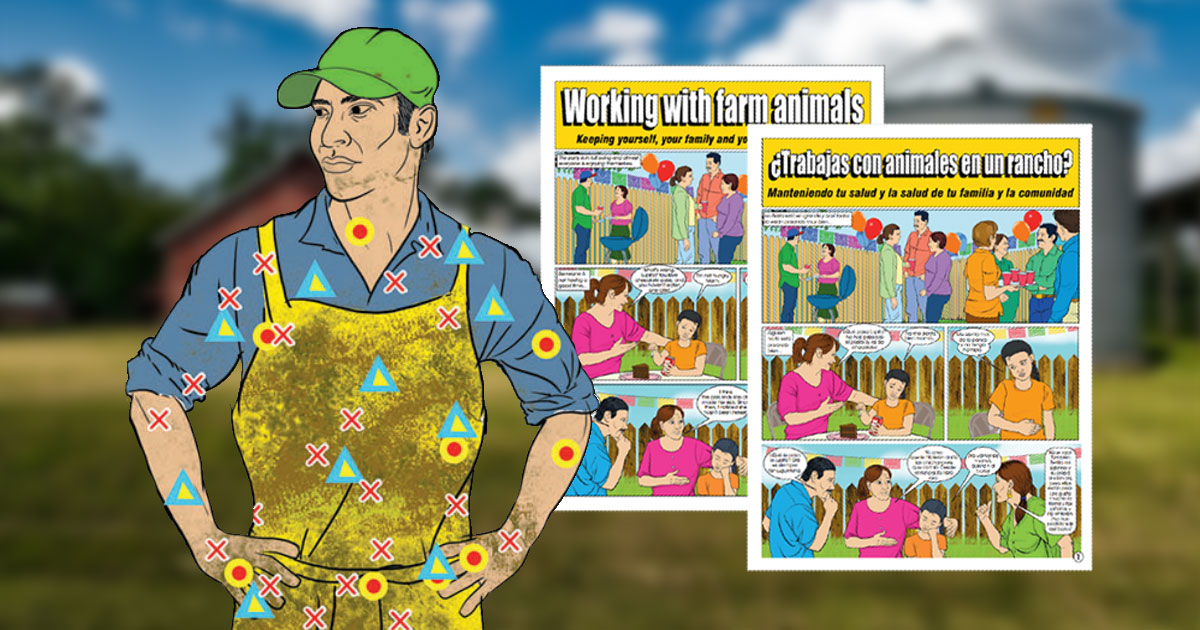
Libro cómic educativo bilingüe sobre cómo prevenir las enfermedades zoonóticas. Desarrollado por MCN en colaboración con la Universidad Estatal de Ohio.
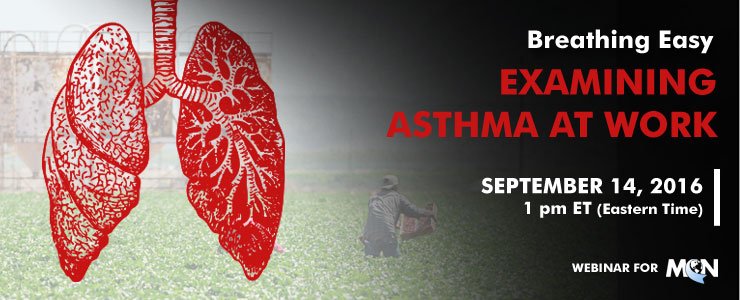
DATE RECORDED: September 14, 2016 at 1 pm ET
PRESENTED BY: Robert Harrison, M.D., M.P.H.
This material will be produced under grant number SH-27640-15-60-F-48-SH5 from the Occupational Safety and Health Administration, U.S. Department of Labor. It will not necessarily reflect the views or policies of the U.S. Department of Labor, nor does mention of trade names, commercial products, or organizations imply endorsement by the U.S. Government.

DATE RECORDED: September 14, 2016 at 1 pm ET
PRESENTED BY: Robert Harrison, M.D., M.P.H.
This material will be produced under grant number SH-27640-15-60-F-48-SH5 from the Occupational Safety and Health Administration, U.S. Department of Labor. It will not necessarily reflect the views or policies of the U.S. Department of Labor, nor does mention of trade names, commercial products, or organizations imply endorsement by the U.S. Government.
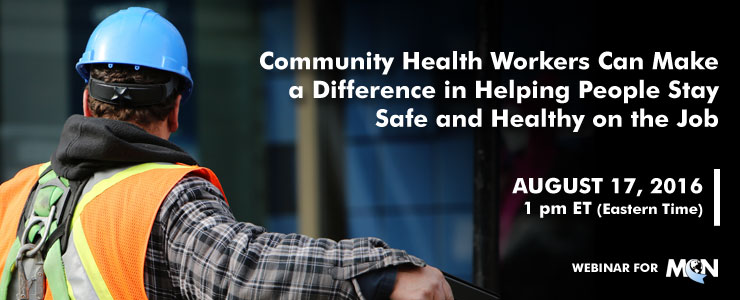
DATE RECORDED: August 17, 2016 at 1 pm ET
PRESENTED BY: Amy Liebman, MPA, MA and Wilson Augustave, member of MCN’s Board of Directors and Senior HIV Case Manager at Finger Lakes Community Health
This material will be produced under grant number SH-27640-15-60-F-48-SH5 from the Occupational Safety and Health Administration, U.S. Department of Labor. It will not necessarily reflect the views or policies of the U.S. Department of Labor, nor does mention of trade names, commercial products, or organizations imply endorsement by the U.S. Government.
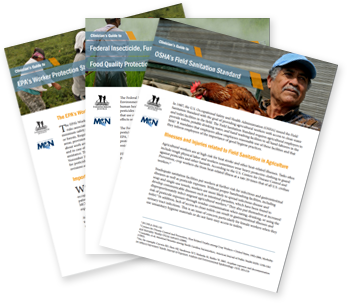
MCN and Farmworker Justice offer these guides to assist clinicians in understanding farmworker health and safety regulations. OSHA’s Field Sanitation Standard; EPA's Federal Insecticide, Fungicide, and Rodenticide Act (FIFRA); EPA's Food Quality Protection Act (FQPA); EPA’s Worker Protection Standard (WPS).